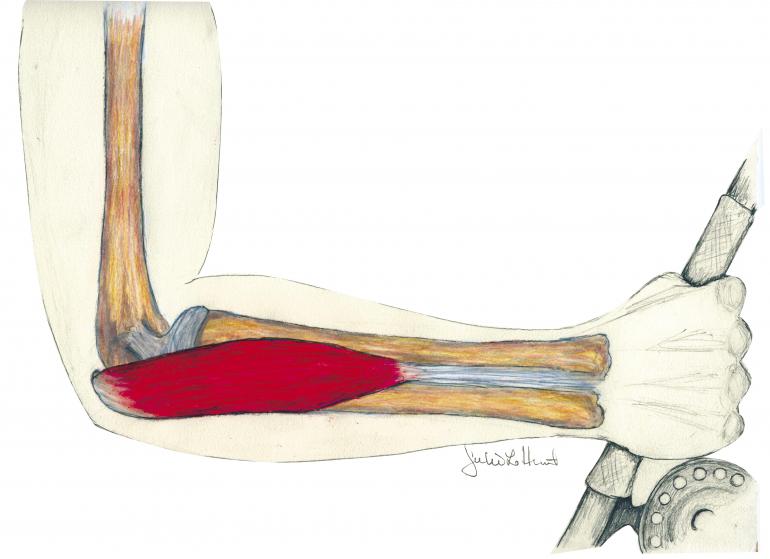A Pain in the Elbow
Summer playtime injuries.
Why is it that in summer months we have more elbow pain? The answers include tennis, golf, fishing, and many other repetitive-strain disorders, from drinking beer to pulling weeds.
The elbow is the joint where three long bones meet in the middle portion of the arm. The bone of the upper arm, the humerus, meets the two bones of the forearm (the ulna and radius) to form a hinge joint. The radius and ulna also meet in the elbow to allow for rotation of the forearm. The elbow functions to move the arm like a hinge (bending and straightening) and in rotation (twisting outward and inward). Chronic or long-term elbow injuries usually relate to tendons, which have little or no blood supply and tend to heal slowly. Muscle injuries around the elbow have good healing potential due to their excellent supply of blood.
Research on fly fishers has shown that factors such as casting style, type of grip, rod weight, and extra weight to sink the flies can cause elbow and shoulder pain. Also, excessive wrist movement can cause elbow pain, which is why the wrist should remain in a fixed, neutral position when casting. People who use a hauling technique tend to have more elbow pain due to the increased torque on the arm. A “haul” is a method of loading the rod that increases line speed and casting distance by pulling the fly line with the non-casting hand in the middle of the fly-casting stroke. The caster can pull on the line once only during the back cast (the single haul) or twice with both the back cast and the forward cast (the double haul).
Tennis elbow, which is also known as lateral epicondylitis, comes from more than just tennis; causes include hammering, screwdriver use, and washing windows. Unfortunately, it is a silent disorder and you do not know you have it until you feel pain on the outside of your elbow. The pain is located in the forearm flexors and is aggravated with wrist motion. It is also very tender when palpated. Tennis elbow is a very frustrating condition that can be treated, but if conditioning is not maintained it can come back very quickly. Golfer’s elbow, or medial epicondylitis, is located on the inside of the elbow in the forearm flexors. No one is immune from these injuries, and they are most common at the beginning of the golf or tennis season, or when the offending activity is increased in intensity or duration.
Repetitive motions cause all of these conditions and the pain is more intense if the motions are performed in a sporadic “weekend warrior” fashion.
Treatments such as electrical muscle stimulation, ultrasound, and massage are all techniques that your physical therapist can provide as well as teach you specific exercises to independently manage your pain and improve your performance.
Julie Jenkins Greenberg, MSPT, was a physical therapist at Vail Physical Therapy and Sports Rehabilitation in Bozeman. Julie has degrees from the University of Texas and Montana State.
The Hazards of 12-oz. Curls
Believe it or not, increased summer beer drinking can cause pain. Twelve-ounce curls at picnics and bars can cause strain on the bicep tendon when bringing the drink to your mouth. Triceps pain can occur when lowering your beer. Excessive pouring from heavy pitchers with one hand is known to cause further irritation. (For tallboys and 40s one must refer to the Drinking for Fitness manual.) So be safe this summer and curl with care.






